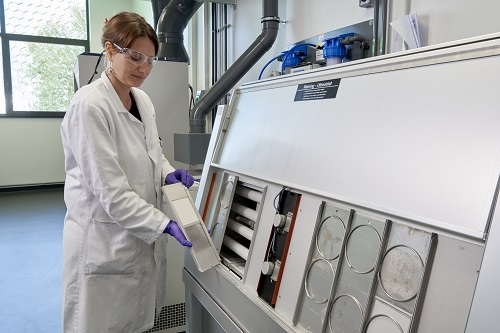Adding nanoparticles that break down air pollutants like volatile organic compounds, or VOCs, to commercial-grade paint could help improve indoor air quality. This innovative concept—air-purifying paint—responds to growing concerns about urban air pollution. Currently, titanium dioxide (TiO2) appears to be the most promising particle in terms of its capacity to break down pollutants under UV light, a mechanism known as photocatalysis. Because of their tiny size, any nanoparticles used in paint must not be released into the atmosphere.
An initial study showed that paints with TiO2 nanoparticles broke down more rapidly and released more VOCs. In particular, two approaches were used to modify the titanium to keep the matrix from breaking down without altering the photocatalytic properties of the TiO2. The first approach was to coat the particles with polyethylene glycol to prevent TiO2 and VOCs from being released into the atmosphere due to the matrix of the material breaking down. In another approach, the TiO2 nanoparticles were grafted onto cellulose nanofibrils to reduce the amount that had to be added to the paint to be effective.

©Guillaudin / environmental aging tests
Mechanical and environmental aging tests were then carried out on paints with organic and mineral matrices containing the modified nanoparticles developed under the Safetipaint projects. The mineral-based paints with the modified particles demonstrated better mechanical resistance than the paints containing TiO2 particles that had not been modified using the coating or grafting processes. The organic paints broke down despite the modified TiO2 particles. The catalytic properties of the mineral paints with these modified nanoparticles were, unfortunately, reduced. Researchers will soon begin investigating how to overcome this problem as part of the EU Sabyna project. These advances could help bring a new generation of paints to the market in coming years.
